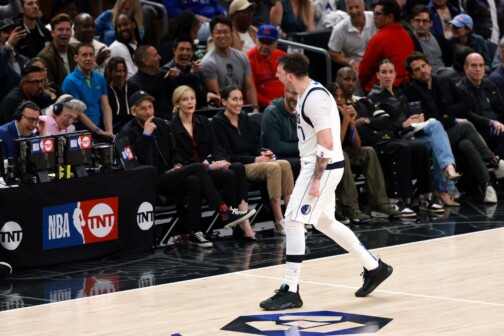JAN SHOWERS, interior designer. Jan Showers & Associates, Inc.: “I was just starting my design business and I was wearing lots of hair. Back then, your idols were, in this order: Halston, Suga, Way Bandy and Scavullo, That was the look of the 70s. And I lived it, I’ve always heard that if you wore it once and it comes back in style, you’re too old to wear it again. So when all this started, I initially thought, ’God, I’ve done this once. I’m too old.’ But I love it.”
LISA DAWSON, director, Kim Dawson Agency: “I
was wearing what they wore in the movie Dazed and Confused, those horrible, awful clothes. We all wore those hip-hugger, bell-bottom blue jeans from the Army-Navy Store with those big, wide white belts and really tight T-shirts. For fall, I like the pants, but I don’t think they’re that 70s. The cut is different, they’re much subtler-it’s a slight flare as opposed to a big bell-bottom and they’re not so ridiculous.”
BARBARA WOMBLE, vice president of marketing, Henry S. Miller Interests, Inc.: “I have pictures of me at a (University of Texas) fraternity party wearing a pair of pants that were very tight, below-the-bellybutton hip-huggers with a tight, knitted top. My whole midriff was exposed. It was-how should I say this?-’naive suggestion.’ It was a free lifestyle. I had long straight hair, tons of eye makeup and platform shoes-to walk across campus! At that age, I could pull it off and I was proud of it.”
EVE REID, hair accessories designer, Eve Reid, Inc.:
“I went to Wheaton for a year and a half and then graduated from Cornell University. Wheaton was all-girls, East Coast, Boston influence. So it was pink and green and lemon-yellow wide-wale corduroys and crew-neck sweaters. The 70s never hit that little piece of the world. At Cornell, the campus was conservative and blue jeans were the uniform. I had not had the privilege of wearing blue jeans in my youth; it wasn’t part of the dress code at our house. So when I got to Cornell, I asked my sister’s best friend to break in a pair for me. It took about a year to get the fading correct. They were Levi’s, not hip-huggers. I’m amused by trends. I like to observe them. That’s part of the value I bring to my company. All those steps that occur season after season are intriguing. They speak to what’s going on in the culture. But I’m a spectator to it, I’ve always been classic.”
CANDACE KRAUSE, president of Brown Productions, a direct marketing firm specializing in the jewelry industry: ” I was just finishing college at Boston University and starting my career. What’s interesting is that I have worn pants my whole life. I am of die Katharine Hepburn school of fashion. It’s where I was in the 70s, it’s where I was in the ’80s, it’s where I am now. Pre-children, that little lower-slung pant probably looked better. But I’m still doing pants.”
MALEE RAUSCHER, designer: “I was in Austin,
finishing up at U.T., wearing the greatest fashions, of course! AH that polyester with hip-huggers and shoes that you could fall off of and sprain your ankle. It was horrible! Fashion goes in cycles, so everything is going to be retro. It’s always going to come back. Now, the designers are trying to do the 70s in a much better way. My style is more eclectic , in that I have a tendency to wear some-thing that’s flattering and comfortable and will work in my lifestyle. Now that the 70s are back, I think Why? Some things are better off buried.”
LINDA BOMAR, co-chairman, the TACA 30th anniversary celebration: ” I was at the University of Texas wearing hip-huggers with big bells and cropped Mexican peasant shirts with those big tall wedgie things to give me a little height-that basic tramp look. I remember looking at Jane Fonda and thinking she was hot. I had that big, coarse hair-and hers was shaggy and cropped to the head. She was tall and slender-and I was not. She was basically everything I was not, which made me look like a fashion mistake.”
JULIE ESPING, owner, JulieAnn. Inc., a clothing manufacturer: “I was in fifth grade in Omaha, Neb. I loved bell-bottoms. They were so wide, like huge wide, just big elephant legs that flopped all over the place, I thought they were the coolest. I remember I had this one T-shirt my mom couldn’t get me to throw away. It was white with pink tie-dyed circles all over. It was my favorite, but it was so thin and see-through and since I was just starting to develop, my mother finally said, ’You cannot wear that anymore.’ Later, I remember my neighbor wearing straight-legged Levi’s and I said, ’Those are the ugliest things I’ve ever seen.’ And she said, ’They’re coming in.’ Five months later, I was wearing them.”
NIKKI KIMMEL SOLOMON, part owner, We Denim, a retailer specializing in recycled clothing:“I was
at Hillcrest High School wearing Red Snap hip-hugger bell-bottoms with tie-dyed T-shirts. My big brother, Eric, was the biggest influence on my style. He always dressed in the latest fashions. The 70s are the hottest thing right now, I have a pair of Levi 501 jeans. I took the waistband off and lowered it to a hip-hugger. Other than that, I won’t do the 70s. I’m somebody’s mother.”
LEZLIE NOBLE, honiemaker. “The first thing I think of is junior high, We were wearing hip-huggers and little short T-shirts. I grew up on the beach (in California), which is like a subculture. It was real earthy. In high school, we had ’50s Day and we used to dress up like the ’50s. Now, I guess they could have 70s Day. That would be scary.”
BROOKE STOLLENWERCK ALDRIDGE, founder, Resource 3 Public Relations: “I was at the University of Texas, vacillating between blue jeans and…blue Jeans. I remember hip-hugger blue jeans with midriffs and big wonderful jewelry. It was so different from wearing a (Hockaday) uniform for most of my life. The idea of having a personal style, for me, was still evolving. There was the properness of the ’50s, then the wild ’60s and the 70s were a balancing act between the two.”
Related Articles

D CEO Award Programs
Winners Announced: D CEO’s Financial Executive Awards 2024
Honorees in this year’s program include leaders from o9 Solutions, Baylor Scott & White, and Texas Capital, as well as our Constantine ‘Connie’ Konstans Award winner Mahesh Shetty of ILE Homes.

Basketball
What We Saw, What It Felt Like: Mavs-Clippers Game 2
A gritty game draws Dallas even in the series.
By Iztok Franko and Mike Piellucci

Baseball
What Should We Make of the Rangers’ Accidental Youth Movement?
It's been 26 years since a defending World Series champion leaned on this many young players out of the gate. In Texas' case, that wasn't the plan. But that doesn't make an influx of former first-round picks a bad thing, either.


